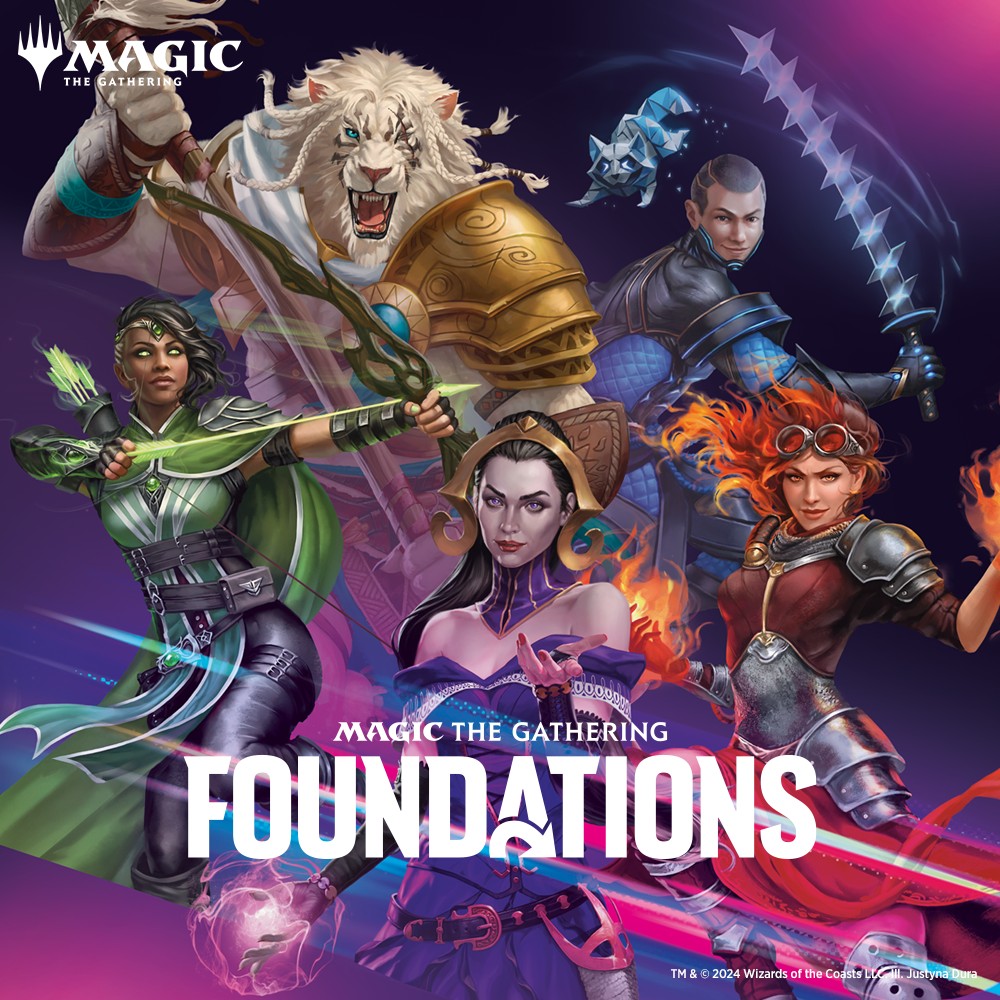The recent barrage of high profile Modern events has finally established an archetype pecking order in a format that's been in flux since the Eye of Ugin banning. Whether you like to play the meta, find something under the radar, or tweak a deck you've been playing for years, the first step is to identify the key players and build a gauntlet. Since I'm applying fresh eyes to the format in the hopes of joining Team Canada by winning the final World Magic Cup Qualifier in Toronto, I've compiled a Power Ranking of the decks I expect to face.
Rather than a simple list of the objective best decks in the format which I think is very hard to quantify, the way I'm interpreting Power Ranking is sort of as a hybrid of quality and popularity. Basically, this is my prediction of what you'll likely see at the top tables four or five rounds into the tournament, along with a few thoughts on whether it would be a good choice to play.
#1: Abzan
While Abzan did not make waves during the triple Grand Prix weekend, what those tournaments did do is set the playing field. With clear targets in sight, a full third of the 24 players at the World Championships registered a midrange Abzan deck in Modern. Lingering Souls, in particular, does a great job of grinding out fair decks while presenting a lot of problems for Affinity and Infect, two of the more popular linear strategies. Grim Flayer is the breakout addition to BG decks that sort of fills the role of Dark Confidant without being a liability against Burn. It also provides a much faster clock against decks like Scapeshift that tend to have inevitability, regardless of the number of discard spells you cast.
Abzan is an interactive deck that's hard to hate out and will give you a chance to win every round, regardless of your specific metagame. Access to Path to Exile to fight the Eldrazi menace and potentially devastating sideboard options like Stony Silence and Rest in Peace justify the white splash over red, and make Abzan the de facto choice for players that want to control the game and disrupt their opponent. If you want to make sure not to lose the tournament in deck selection, Abzan is a solid bet.
#2: Bant Eldrazi
Bant Eldrazi decks made Top 8 in both Indianapolis and Lille, but the real story was how prevalent it was throughout the Top 64. It was one of the three most successful decks that weekend alongside Affinity and Infect, after which there was a noticeable drop-off. It gets the nod over those other two because it's the one least likely to be negatively impacted by an expected rise in Abzan decks featuring Lingering Souls.
Like Rock-style decks, it's hard to hate out of the metagame, and your good draws will prove tough to beat. Thought-Knot Seer is a great disruptive element and Reality Smasher kills people extremely quickly. Although it didn't make as big a splash as Abzan, Bant Eldrazi was well-represented at Worlds by Brian Braun-Duin and Steve Rubin, with Brian going undefeated at 3-0-1. There are some consistency issues as your draws that include Eldrazi Temple are much better than those without, but if you're strictly concerned about overall win percentage, this seems like a good, safe choice.
#3: Affinity
As people have learned over the years, you can never discount Affinity. It can rise to the top even amidst a sea of hate, and has a very loyal following. Two Affinity players made Top 8 in Indianapolis, and another in Lille. Compiling data from the Top 64 of all three Modern GPs, Frank Karsten rated Affinity as the top deck in what he calls a record-based metagame, a ranking of the most popular decks that's adjusted for win frequency. The only reason Affinity isn't higher on this list is the recent shift in BG decks to Abzan over Jund. While Affinity expects to lose some percentage of post-sideboard games to hate cards, Lingering Souls is a real problem that will affect your ability to reliably win Game 1. While cards like Etched Champion can still lead you to victory, the road is not nearly as smooth.
Despite the hate, I would not say that Affinity is still a reasonable choice, but I don't think it's well-positioned enough to recommend to anyone other than an experienced pilot. Although you do win some games by a landslide, it's actually a very difficult deck to play well. If you do decide to pick it up, make sure to practice the mirror. It will come up and is one of the most complicated matchups.
#4: Scapeshift
Valakut, the Molten Pinnacle decks have splintered into two or three versions. Scott Lipp and others performed well with a Through the Breach version at GP Indianapolis. In contrast, Oliver Tiu championed a RG Scapeshift version at Worlds, where a 4-0 record in Modern carried him to the Top 4. If you prefer a blue-based control version, Lukas Blohon managed 2-2 in the same tournament with four copies of Bring to Light. Personally, I think Oliver's version is the most consistent while still presenting a fast enough clock to compete with other linear strategies.
One of the great things about Scapeshift decks are their resilience. There really isn't a great way to prevent them from making land drops and eventually killing you with a one card combo. Without the vulnerability that other linear decks have to sideboard hate, this is an excellent choice in a field of midrange decks like Abzan and Bant Eldrazi. It's a metagame call, however, as you don't have a lot of ways to interact with faster aggressive strategies like Infect or Zoo.
#5: Burn
Burn is a consistent deck that's relatively easy to play, cheap, and will keep the field honest. It won't blow you out of the water, but it will present a reliable clock and beat up on unprepared opponents. Although many prefer decks with more decision points, Burn is a legitimate tier 1 deck that remains a legitimate threat to win the tournament, just like it did a few weeks ago in Indianapolis. It punishes shockland mana bases and doesn't care at all about grindy cards like Lingering Souls. It does care a lot about Chalice of the Void and Leyline of Sanctity, however, and will have a tough time fighting through any hate that people decide to play.
Burn is a good choice for anyone who wants to give themselves a chance to win but doesn't have a lot of time to get up to speed on the format. It has been reasonably well-positioned for a while now, and is rarely a terrible choice.
#6: Suicide Zoo
Death's Shadow Zoo decks can end the game extremely quickly and are especially threatening to decks like Scapeshift and Tron that don't punish them for having a low life total. Placing one copy into the Top 8 at each Grand Prix, it's certainly a deck to be wary of, but not one with much flexibility to adapt to a changing metagame.
Whether Suicide Zoo is a good choice depends heavily on what decks you expect to face. Like Infect, it thrives against non-interactive decks with a slower clock. With larger threats and Temur Battle Rage, it's not as vulnerable to Lingering Souls, but the fact that it does so much damage to itself can hamper it in a damage race.
#7: Infect
Ever since Pantheon played it at the Pro Tour, there is a dedicated contingent that swear by Infect and seem to gravitate towards it whenever Modern season comes around. It won GP Lille in the hands of Meciek Berger and posted a number of other solid finishes, particularly outside North America. It presents a faster clock than other tier 1 decks, and will punish opponents who are not prepared to interact.
More than most of the other decks on this list, Infect has a Legacy-like matchup profile, with some very good matchups and others that are quite bad. If you expect a lot of slow, non-interactive decks like Tron and Scapeshift, it can be a great choice, but it's not a deck I'd be looking to play when the BG midrange decks are splashing white for Lingering Souls.
#8: Jund
Considering the amount of overlap between Jund and Abzan, it's not a complete surprise that players at the World Championships did not all play the same splash in their BG decks. Reid Duke and Brad Nelson both favored Jund and you could do a lot worse than following those two into battle. While Abzan gets Path to Exile and some good white sideboard cards like Stony Silence, Jund gets Lightning Bolt and, perhaps just as importantly, a dual land in Blackcleave Cliffs that often comes into play untapped without costing you life. Lingering Souls is the main reason to choose Abzan, but that's mainly relevant if you expect a lot of Affinity and Infect.
I personally feel that there will be enough Affinity this weekend that I'd rather be on Lingering Souls, but there is something to be said for trying to end the game quickly if you expect a lot of decks like Scapeshift or Ad Nauseam that don't care about this kind of incremental value.
#9: Jeskai Nahiri
Jeskai was notably absent from Top 8 coverage on Modern Grand Prix weekend, but it did place several copies in the Top 64 in Lille, with Claude Schmit finishing highest in 19th place. It gets the nod over some of the other tier 2 decks on the strength of a win at the SCG Modern Classic in Richmond the following weekend.
Unlike some of the other decks that hover just off the radar, Jeskai Nahiri seems to have what it takes to actually win a tournament when the metagame bends slightly in its favour. With so many viable decks in Modern, even those that beat the top two or three decks often have to dodge a number of problematic matchups over the course of the day. Like other midrange decks like Jund and Abzan, Jeskai's bad matchups are never truly horrendous, making it a solid choice if it fits your play style.
#10: RG Tron
Tron decks are very good at what they do, which is casting potentially game-winning threats as early as turn 3. This is a powerful enough strategy to guarantee excellent matchups against the midrange decks at the top of this list, and is probably your best choice if all you want to do is beat Abzan and Bant Eldrazi. What Tron is not very good at doing, however, is interacting in the first two turns, which is why it tends to have very poor matchups against all-in aggressive strategies like Infect and Suicide Zoo.
Modern is a diverse enough format, that pinning all your hopes on facing the same two or three matchups over and over again does tend to work out, which is why Tron has been relegated to tier 2 status. That doesn't mean it's a bad deck however, and is a reasonable choice if your metagame is rife with midrange decks, and you don't mind take some risk in the pairing lottery.
While these are the ten decks I'd recommend to build as a gauntlet, and the ones I'd want to have a solid plan for, the extensive Modern card pool supports a number of other competitive strategies, many of which have what it takes to win a tournament on the right day. To give you an idea of what I mean, here's a short list of ten other decks that I think are good enough to consider if you're looking for something under the radar:
#11: Abzan Company
#12: Dredge
#13: Living End
#14: Goryo's Vengeance
#15: Merfolk
#16: Lantern Control
#17: Ad Nauseam
#18: Bogles
#19: BW Tokens
#20: Grixis Delver
Whatever you decide to play, I hope this helped a little in your preparation. Good luck at your next Modern event!




